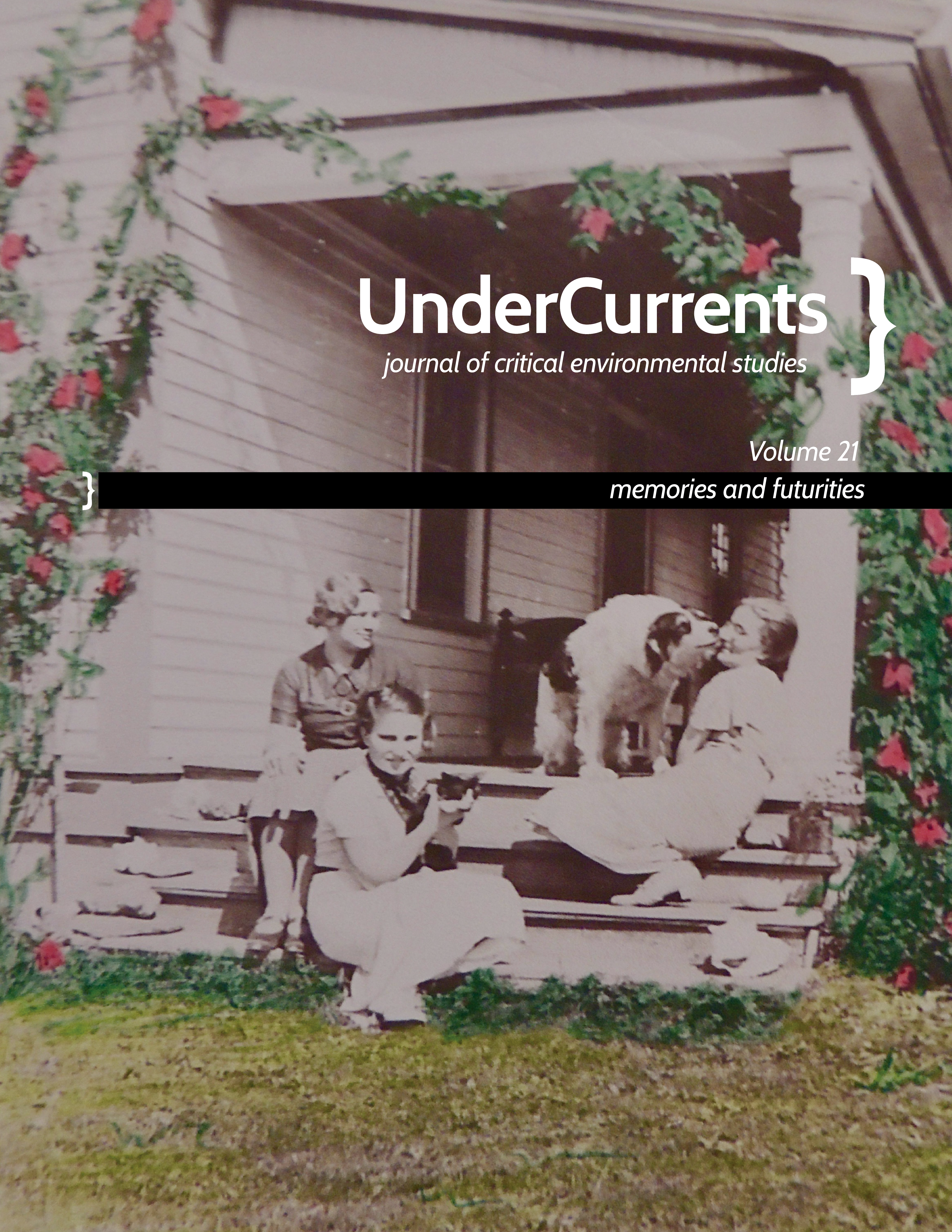Water Memory
DOI:
https://doi.org/10.25071/2292-4736/40289Keywords:
grief, memory, the body, intergenerational traumaAbstract
Silvia Federici writes,
"Starting from an analysis of "body-politics," feminists have not only revolutionized the contemporary philosophical and political discourse, but they have also begun to revalorize the body. This has been a necessary step both to counter the negativity attached to the identification of femininity with corporeality, and to create a more holistic vision of what it means to be a human being." (15)
I wonder, what does it mean for my body to live on different land than my parents'? How do I reckon with the gender binary, and with having a body and a gender that exist outside of normative narratives? What does it mean to dig into sexuality in a world of gender-based violence, of body negativity, of sex negativity, of moralism? What does it mean to fully grieve in a culture that obliges the body to be quiet and pretty? It is strenuous to seek embodiment in a world where the body is a site of so much violence and pain. Nonetheless, I am curious, and I am committed to the revalorization of the body as a site of liberation and wholeness.
“Water Memory” is the story of the traumas that continue to live in my body—ancestral and current. It is written as an invocation of intimacy partnered with grief. It encourages relationships (with the self and with others) that not only allow, but revel in, the fullest embodiment of the body’s experience.
I write from a place of queerness, of transness, as a first-generation Greek/Turk/Uke Canadian with chronic pain and a mood disorder. Yet, I insist, my body is not the enemy.
References
Federici, Silvia. Caliban and the Witch: Women, the Body and Primitive Accumulation. Autonomedia, 2004.
Downloads
Published
How to Cite
Issue
Section
License
Copyright (c) 2022 UnderCurrents: Journal of Critical Environmental Studies

This work is licensed under a Creative Commons Attribution 4.0 International License.
Creators retain copyright for all writings and artwork published in UnderCurrents. New material published as of Volume 21 (2022) is available under a Creative Commons Attribution 4.0 International License (CC-BY 4.0).


